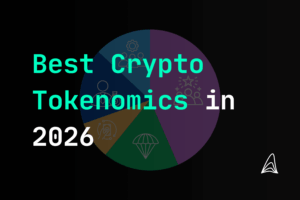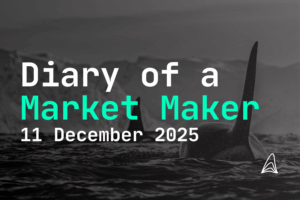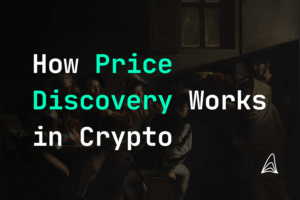
How to Mint a New Token - A Simple Guide By The Experts
- Jakob Brezigar
- Last updated: 13.June 2024
- Reading time: 5 min
Stepping into the digital world of cryptocurrencies, the art of crafting a new token might initially seem daunting but is indeed filled with excitement and possibilities. For tech enthusiasts, startups, and companies eager to explore the world of decentralized finance (DeFi), a comprehensive guide on token minting is not just helpful—it’s essential. We’ll try and try to simplify what might otherwise appear as an intricate maze, and try to make it as enjoyable as finding an Easter egg in your favorite video game.

Table of Contents
What is the role of testing in token creation?
Testing ensures your smart contract functions correctly under various conditions, preventing potential financial losses or security risks.
Why is choosing the right blockchain platform important?
Selecting the right platform impacts transaction speed, costs, and smart contract capabilities, crucial for the functionality and scalability of your token.
How can Orcabay assist in token development?
Orcabay provides strategic advice and connects you with specialized firms for smart contract coding, ensuring your token’s technical execution meets high standards.
Key Takeaways - How to Mint a Coin:
- Define your token’s properties meticulously to shape its utility and scarcity.
- Choose the right blockchain platform based on transaction speed, fees, and smart contract complexity.
- Crafting a secure smart contract is critical; engage experts like Kalmia or Apillon for reliable development.
- Testing on platforms like Ethereum’s Rinkeby ensures your smart contract performs flawlessly.
- Partner with market makers like Orcabay for liquidity and stability before launching your token.
Define the Token's Properties
Before diving deeper, what exactly will your token represent? This initial step is about nailing down specifics like total supply—how many tokens will exist? Is your token divisible, and if so, to what extent? Will it inflate over time, or is its quantity capped, providing a scarcity element like that of Bitcoin? Perhaps your token will facilitate transactions within a specific ecosystem or maybe it carries voting rights within your platform. Clear definitions here act as the blueprint for your token’s future interactions on the blockchain. So define the token properties appropriately and with great deal of precaution! Listen to expert’s opinions if applicable. Hint – Orcabay knows some stuff…
Choose a Blockchain Platform
Selecting the right blockchain is in some way similar to choosing the best soil for planting your seeds—you need the right environment to flourish. Ethereum, being the first to offer a robust environment for smart contracts, is often the default choice. Yet, there’s a growing list of contenders like Binance Smart Chain, which offers a faster and more cost-efficient alternative, or Solana, renowned for its lightning-fast processing capabilities and minimal fees. Each platform has its merits and limitations, so consider your specific needs, such as transaction speed, fees, and the complexity of the smart contracts you intend to deploy. Also consider crypto exchanges if possible.

Write the Smart Contract Code
Crafting the smart contract is like writing the rule book for your token. This set of predefined rules will govern all interactions with your token on the blockchain. It’s where you program the logistics of transactions, token distribution, and any other conditions you’ve dreamed up. The solidity of your smart contract is of crucial importancel; it must be secure, efficient, and, above all, perform exactly as intended without any loopholes that could be exploited.
How to Write the Smart Contract?
Coding a smart contract might sound intimidating, but it’s a manageable challenge with the right resources. If you’re not a seasoned coder, fear not—enterprises like Kalmia and Apillon are at the forefront of this field. They offer specialized services for crafting precise, secure smart contracts tailored to your project’s needs. Engaging with such firms can dramatically smooth out the complexities of coding, transforming what might seem like a steep mountain into a manageable hillside hike.
How Orcabay can Help You With Smart Contract Development
While Orcabay does not directly handle smart contract coding, our role in your token creation process may be very significant or even pivotal. We provide strategic advice on token development and have the expertise to connect you with technical specialists who can execute your vision. Orcabay partners with firms like Kalmia and Apillon, which are proficient in developing robust smart contracts tailored to specific project needs. This strategic collaboration ensures that while Orcabay advises on the broader aspects of blockchain projects, the technical execution is handled by experienced coders who can implement secure and efficient smart contracts.

Test the Smart Contract
Testing is the safety net for your smart contract, ensuring that it performs as expected under various scenarios. This phase is crucial—think of it as the dress rehearsal before your big stage debut. Employing test networks such as Ethereum’s Rinkeby or Goerli allows you to simulate transactions and interactions without the risk and expense of real assets. It’s about making sure every line of code does exactly what it’s supposed to do, and catching any errors that could otherwise lead to financial loss or compromised security.
Deploy the Smart Contract on a Blockchain
Deployment is your go-live moment—it’s when your token officially starts its life on the blockchain. This step must be approached with precision and confidence, ensuring that all previous testing has affirmed the smart contract’s readiness. Once deployed, your token will be part of an immutable ledger, available for trading, investing, or whatever utilities your token was designed to provide.
Verify and Publish the Source Code
In the spirit of blockchain’s foundational ethos—transparency—verifying and publishing your source code allows the community and potential investors to review the mechanics behind your token. This openness not only builds trust but also invites tech-savvy individuals and security experts to examine and affirm the solidity of your smart contract. It’s a bold step toward establishing credibility in a space where trust is paramount. However there always exists the possibility of people with destructive intentions, so consider all of the aspects when making that decision.
Create a Token Wallet
Your token needs a home, a wallet where users can securely store, send, and receive your digital asset. Ensuring your token is compatible with major wallets enhances user convenience and accessibility. Consider integrating with popular wallets like MetaMask, Trust Wallet, or hardware wallets like Ledger for enhanced security. This integration facilitates seamless transactions, making it easier for users to manage their assets and for your token to be adopted by a broader audience.
Partner with a Market Maker Before the Token Generation Event (TGE)
Collaborating with a market maker prior to your token’s official launch can significantly influence its initial market stability and liquidity. Market makers play a pivotal role in ensuring that there’s enough volume on exchanges for your token to trade effectively without large price swings. They help create a smoother entry into the market, enhancing investor confidence by mitigating potential risks associated with low liquidity. Think of them as the skilled conductors of an orchestra, making sure that every section comes in at the right time to create a harmonious symphony when the token generation event goes down.
Distribute the Tokens
The final act in your token’s launch saga is distribution. This phase is about putting your tokens into the hands of users. Whether you choose an Initial Coin Offering (ICO), a direct sale, or an airdrop, each method has its nuances and impacts how your token is perceived and adopted by the community. An ICO can generate significant capital and interest but requires careful legal consideration. Direct sales offer more controlled distribution, while airdrops can increase widespread token distribution and awareness. Choosing the right strategy aligns with your goals and ensures your introduction to the market is as impactful as possible.

Conclusion - How Mint a New Token
Embarking on the journey of token minting is like setting sail into a vast ocean of opportunities and challenges. With the right crew—expert guidance from developers, strategic insight from market makers like Orcabay, and continuous engagement with your community—you can sail through these circumstances successfully. Remember, the world of cryptocurrencies is dynamic and fast-paced, but with a carefully crafted token and a clear vision, you’re well on your way to making a mark in this digital frontier.
Disclaimer: The information provided in this article is for informational purposes only and does not constitute financial, investment, or other professional advice. All opinions expressed herein are solely those of the author and do not represent the views or opinions of any entity with which the author may be associated. Investing in financial markets involves risk, including the potential loss of principal. Readers should perform their own research and consult with a licensed financial advisor before making any investment decisions. Past performance is not indicative of future results.

Jakob Brezigar
Jakob, an experienced specialist in the field of cryptocurrency market making, boasts an extensive international presence. With Orcabay, he has skillfully managed major operations and deals for a wide array of global stakeholders.



